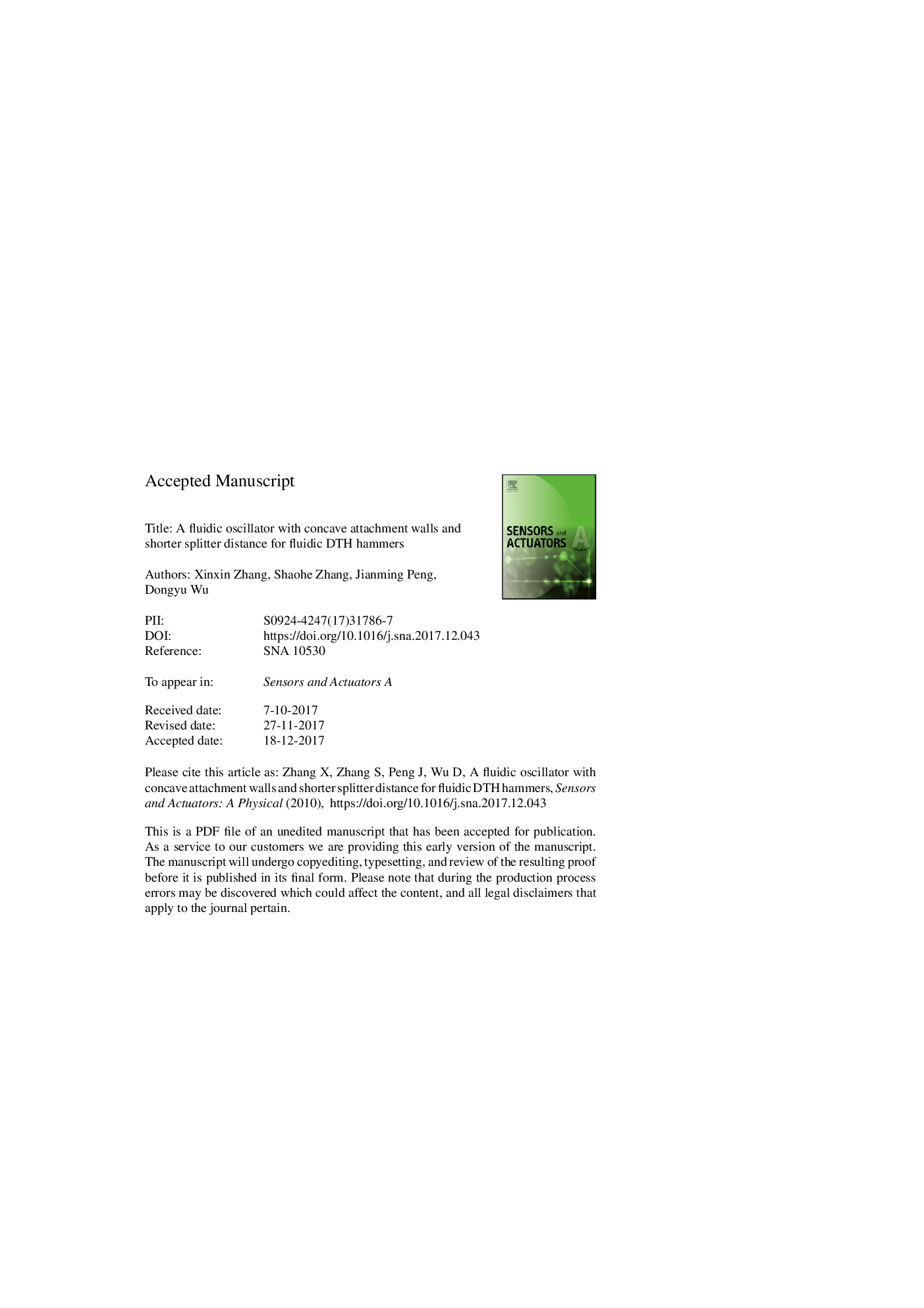| Article ID | Journal | Published Year | Pages | File Type |
|---|---|---|---|---|
| 7133864 | Sensors and Actuators A: Physical | 2018 | 38 Pages |
Abstract
Focusing on various designs of fluidic oscillators for fluidic down-the-hole (DTH) hammers, we systematically analysed the critical Reynolds number, operating range, and impacting performance via numerical and experimental methods. The blocked load-instability and load-stability were proposed to characterize the initiation mechanism of the fluidic DTH hammer; moreover, we intend to provide a few new design bases. Analyses of the waveforms of the acoustic signals further corroborate the new design concept. Additionally, the original plane-wall fluidic oscillator and the fluidic oscillator with concave attachment walls and shorter splitter distance were designed and manufactured. A sequence of numerical and experimental investigations on the new designed fluidic oscillator have been done and verified to improve the performance of the fluidic DTH hammer. It is observed that it is more straightforward to initiate the fluidic oscillator with concave attachment walls and shorter splitter distance and that it exhibits a broader operating range. The impacting performance of the fluidic DTH hammer with the concave-wall and shorter-splitter-distance fluidic oscillator is the highest. In particular, the results obtained in terms of impact energy and output power exhibit enhancements of up to 12% and 15.6%, respectively, compared to the original fluidic DTH hammer. The impact body of an optimally designed fluidic DTH hammer has a mass of approximately 8â¯kg.
Keywords
Related Topics
Physical Sciences and Engineering
Chemistry
Electrochemistry
Authors
Xinxin Zhang, Shaohe Zhang, Jianming Peng, Dongyu Wu,
